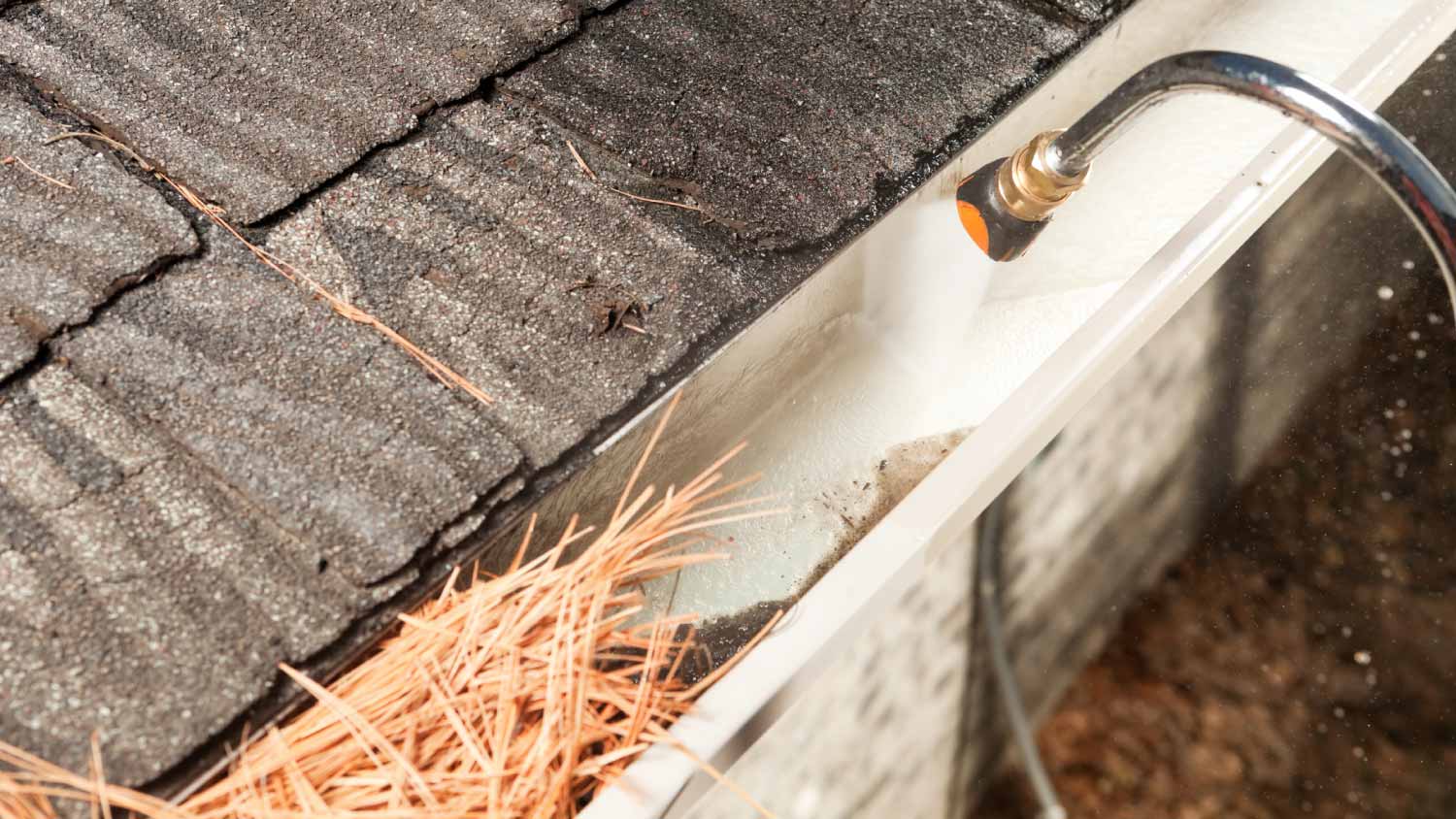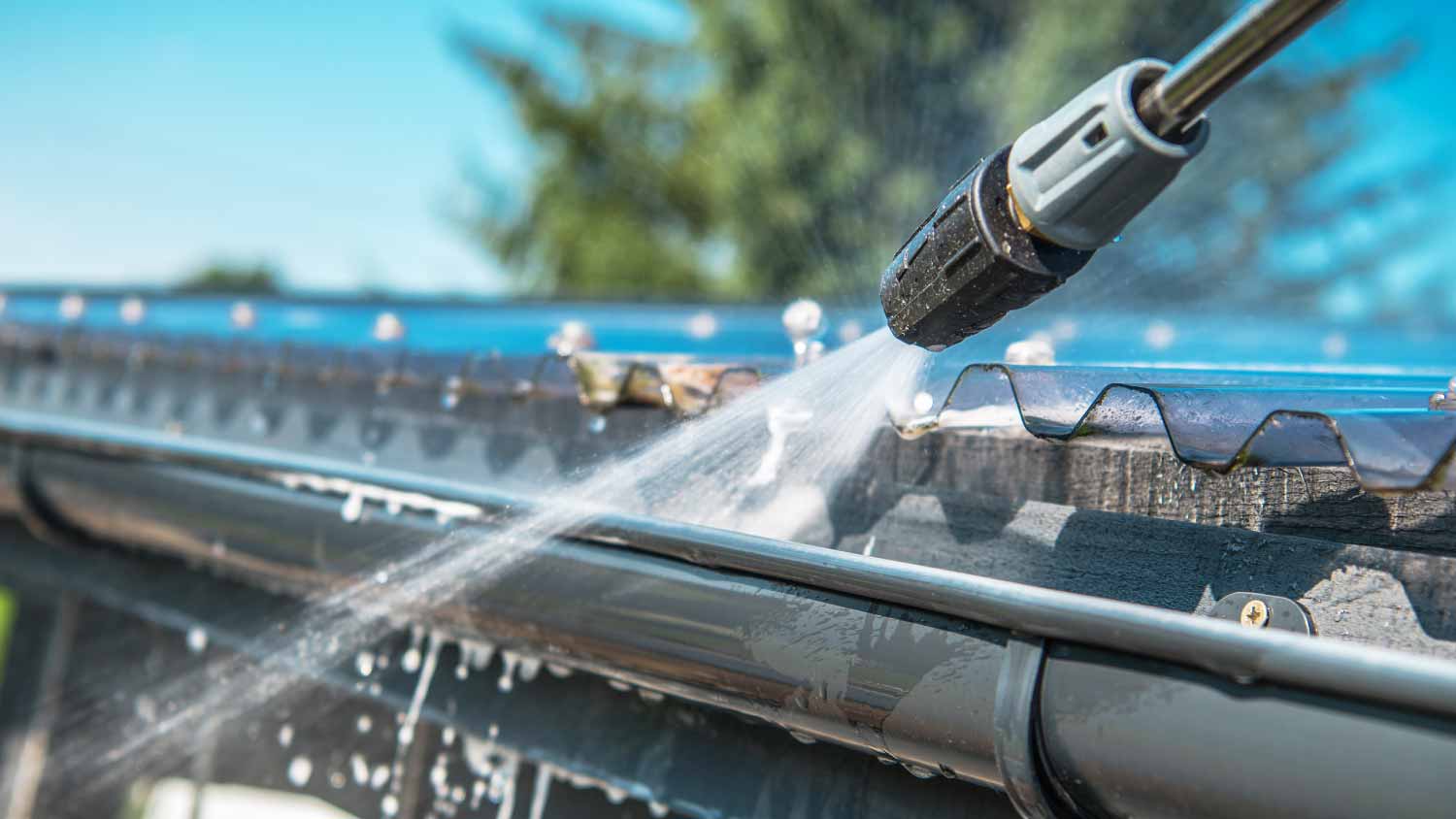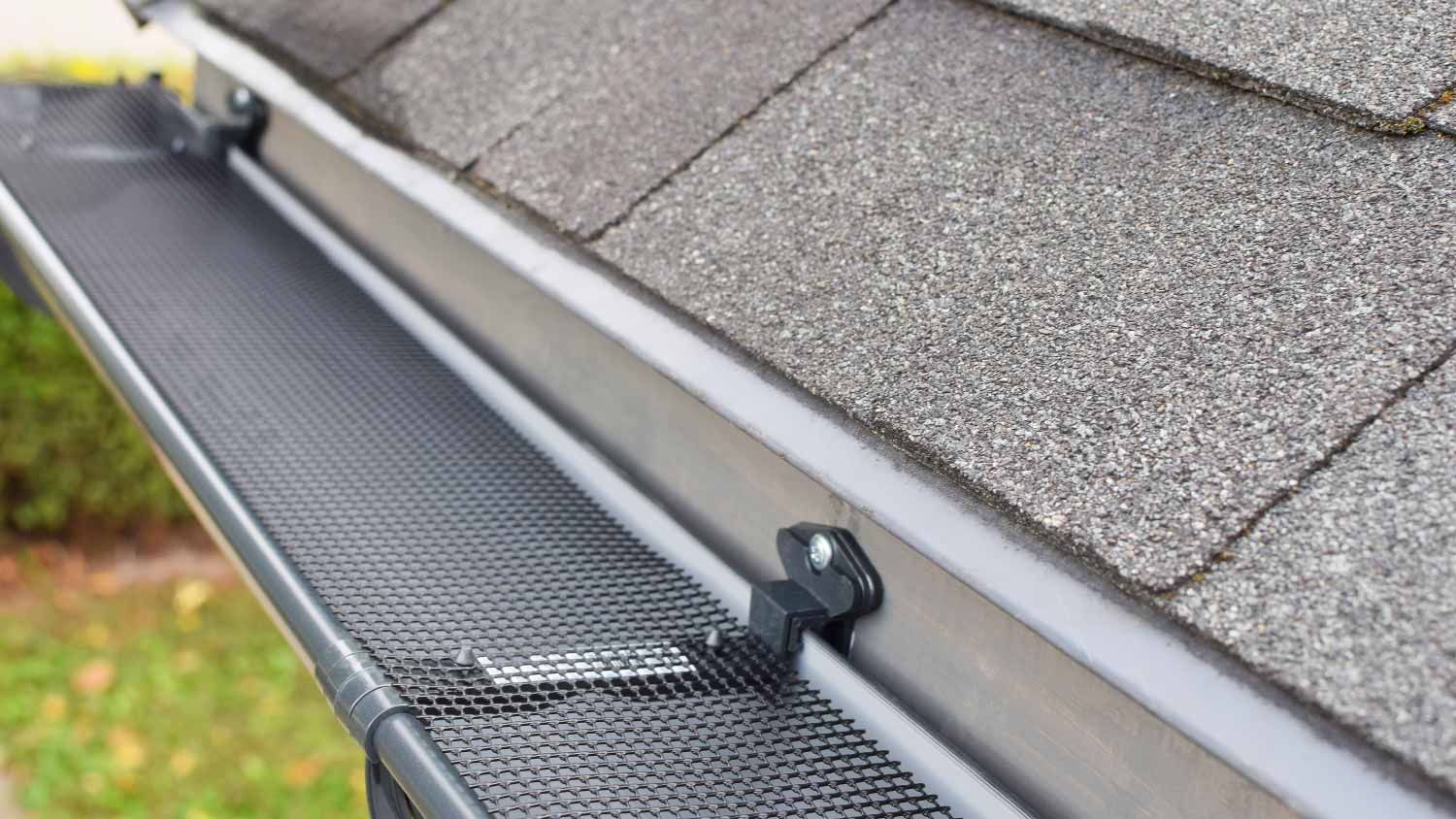
This guide to gutter cleaning costs provides estimates for cleaning different types of gutters, tips for saving money on gutter cleaning, and answers to how to clean gutters.
Stay grounded while doing this important maintenance task


DIYers often leave behind stubborn clogs or accidentally dent the gutters when cleaning gutters without a ladder.
Professional gutter cleaning costs around $120 to $230, but it’s more cost-effective than buying a $2,000 gutter vacuum for a DIY project.
For many homeowners, it’s worth hiring a gutter cleaner who can flag any gutter or roof issues before you experience mold, rot, or water damage.
Cleaning your gutters is a straightforward yet essential home upkeep task. But if you’re not a fan of heights, you might find yourself dreading the idea of climbing up a ladder to complete this chore. Here’s the good news: Thanks to a variety of readily-available tools and attachments, you can keep your gutters free of clogs without ever leaving the ground.
Simply put, keeping your gutters clear of leaves, twigs, and other debris allows them to function properly. And your gutters have a very important job to do: They direct stormwater away from your home, helping to prevent roof damage, foundation cracks, basement flooding, and other problems.
These easy-to-use tools and attachments allow you to dislodge debris from gutters while keeping both feet firmly on the ground.

Also known as a gutter cleaning wand, a gutter cleaning hose attachment offers an easy way to turn the hose you already have into a DIY gutter cleaning tool. This sprayer attachment works by pushing debris from gutters with water. To use a gutter hose attachment, simply connect the pole on the attachment to your hose.
Lift the gutter hose attachment into the end of the gutter that’s opposite from your gutter spout. As the water flows from the attachment, you should see debris blasting out from your gutter. Slowly move your way down the gutter toward the downspout until everything is clear.

Purchasing a leaf blower gutter cleaning kit can change the game when it comes to reaching your gutters. This attachment is meant to be fixed to the end of the nozzle on your leaf blower. With the attachment in place, position the tip into your gutters starting at the end that's farthest from your downspout. Then move forward slowly until you reach the other end of the gutter.
It's best to use a leaf blower on your gutter in dry conditions. When debris is wet, it may stick together and resist being blown out by your leaf blower.
Because your blower will kick debris into the air, you should wear goggles and protective gear. In addition, you should send family members and pets inside the house before starting this task.

Many people don't realize that a power washer can be used to clean gutters if you don't have a leaf blower readily available. When using a power washer, you'll use the same technique you would if using a leaf blower to push out debris using pressure. A bonus of using a power washer to clean gutters is that you can wash the rest of your home's exterior at the same time.
Just be careful not to apply too much pressure when cleaning your gutters with a power washer, since excessive pressure could damage your gutter system.
Gutter tongs offer a good degree of control when removing debris from your gutters. The design consists of a handle and trigger attached to a long pole with a set of tongs on the end. This tool is great for reaching into high gutters to pull out stubborn debris. While you can use gutter tongs alone to clean your gutters, they also work well in conjunction with the other methods mentioned in this article.

If you have gutters that are prone to clogging, a gutter vacuum, which costs about $2,000, may be a worthwhile investment. These vacuums come with attachments that are specifically designed to help you suck out dirt and debris from gutters.
Generally, a gutter vacuum has more power compared to other non-ladder methods of cleaning debris from gutters. You may find that you are able to suck up 100% of debris in just a few minutes. You also don't have to worry about debris falling down from your gutters and making a mess the way you do with methods that simply push out debris instead of sucking it up.

Let's file this one under preventative methods. While gutter guards don't technically clean your gutters, they do keep your gutters clean. Gutter guards reduce buildup by forming a physical barrier against debris. They are typically made from aluminum, nylon mesh, or plastic. After you install gutter guards, you’ll still need to clean your gutters as part of routine household maintenance. But these products will greatly reduce the time and effort required to get your gutters clear.
Sticking to a regular cleaning schedule is the best way to prevent gutter clogs, but occasionally, your gutters may need an extra cleaning. Keep an eye out for these telltale signs that your gutters need to be cleaned:
Water pouring over the sides of the gutter
Gutter that’s sagging or pulling away
Presence of birds, insects, or other critters
Plants growing in the gutter
No water comes out of the downspout during a storm
Stains on the gutter or the siding nearby
From average costs to expert advice, get all the answers you need to get your job done.

This guide to gutter cleaning costs provides estimates for cleaning different types of gutters, tips for saving money on gutter cleaning, and answers to how to clean gutters.

Your gutters only need routine cleaning twice a year to stop bigger issues. Find out the eight problems your clogged gutters could cause in your home.

This guide on how to clean the outside of gutters offers tips for how to remove debris, grime, black spots, and streaks from gutters to get them to last as long as possible.

When the temperature drops, your gutters could freeze. Learn how to melt ice in gutters to prevent ice dams and overflow.

Harvesting your own rainwater is surprisingly simple. A rain barrel costs very little compared to how much you’ll save—and Mother Earth will thank you, too.

Learn who to hire to clean your gutters to find the right local professional for gutter cleaning quotes.